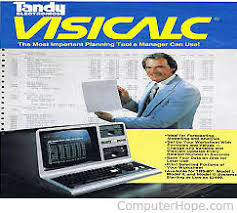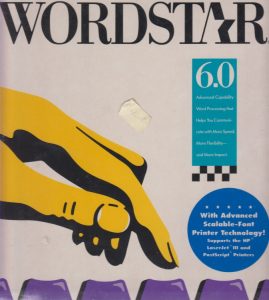A just-completed survey of Software Preservation Network members shows that the Code of Best Practices in Fair Use for Software Preservation is a needed and welcome tool to get their work done. That’s important to the rest of us, because these people make sure we can still access our digital culture, long after the software we used to create it went obsolete.

The Code of Best Practices in Fair Use for Software Preservation helps preserve digital culture.
The Takeaways:
- Software preservationists highly value fair use, and have used it to get their work done.
- They also regularly employ other tools to make copyright more flexible, such as Creative Commons and open-source licenses.
- However, they also routinely attempt to get permissions for their work, and most have suffered delays or even abandoned projects as a result.
- They also say they would use fair use more if they had more confidence in how to use it.
- Thus, the Code of Best Practices in Fair Use for Software Preservation is well-positioned to address current problems with a willing and eager set of practitioners.
The Specifics:

If someone built your house using acomputer-aided design program, you might not be able to access their specs without a software preservationist.
Results are limited by the small size of the survey, which focused on a small population, that of software preservationists associated with the Software Preservation Network. 50 people opened the survey, of which 27 finished it. But the responses reflected seasoned knowledge in the field. Those who completed it were almost all archivists, and almost all with at least five years’ experience. They were mostly white, fairly equally divided between men and women, and most had graduate degrees.
Software Preservationists Embrace Fair Use, Open Access and Open Source
Fair use already was in the culture of this group. Two-thirds of them (64%) were pretty confident or very confident in their knowledge of how to apply fair use. They near-universally had a positive view of fair use. Almost all had heard of the Code of Best Practices in Fair Use for Software Preservation, published in September 2018. Almost all had told others about it, mostly their colleagues; this suggests their positive evaluation of it. Only one response to a word-association question elicited a negative word—“grey.” All other words were either functional (“research,” “render,” “migration”) or positive (“freedom,” flexibility,” “necessary,” “preservation game-changer”). Some 85% found fair use “necessary” or “very useful,” with no one rating it negatively. They were near-universally unconcerned that others’ fair use could harm their own project or institution. Only one person reported harm, explaining, “Used works to report on event I was running but also advertise their own competing event.” This, however annoying, is clearly not an abuse of fair use.

Software preservations seek out many ways to avoid copyright challenges.
The group was, in general, supportive of efforts to lower the copyright bar to access. They were likely (74%) to use Creative Commons licenses to make their own non-software work available to others, and more than half (51%) had used open licenses to make code available to others, demonstrating a wish to lower the bar to access that copyright by definition creates. Some 94% said they had searched for/used work because it was openly licensed.
Three quarters (77%) have employed fair use to do work that otherwise could not be accomplished. This included:
- Sharing software across institutions through emulation as a service (EaaS);
- Preserving bit-level copies of copyrighted software and operating systems;
- Posting software to sites made available by the Computer History Museum;
- Using software in presentations and research;
- Making software available to patrons, in person and online.
But Permissions-Seeking Causes Problems

Data trapped on the obsolete spreadsheet software Visicalc–once industry standard–often can’t be rescued without fair use.
Despite an awareness of and positive associations with fair use, in practice permissions remain extremely important. More than half (58%) get permissions “sometimes,” “frequently,” or “always.” This does not however necessarily always demonstrate a failure to employ fair use, since fair use does not cover all uses of others’ copyrighted materials in preservation. It may among other things indicate the role of donors’ agreements in many archival acquisitions.
As well, in spite of relative confidence about their fair use knowledge, and the obvious direct relevance of fair use to their daily practice, the overwhelming majority (81%) had abandoned or avoided a project because of copyright concerns. For half of them (52%), this was something that happened “sometimes” or “often.” Problems they identified included:
- Not having the serial or key to software;
- Lack of clarity about what the license permits;
- Deciding not to use software in an educational environment because of concerns about downstream uses;
- Avoiding a project because of orphan works;
- Acquiring donated material given under such restrictive terms that scholars could not access it;
- Restrictions of an academic publisher on fairly used images;
- Avoiding fair use in a public exhibit, because of risk avoidance;
- Avoiding copyrighted images in slideshows for public presentation;s
- Avoiding inserting otherwise appropriate copyrighted software into open-access projects.
These problems occurred both before and after the creation of the Code of Best Practices in Fair Use for Software Preservation, some 10 months before the survey was launched.

Everything written with pioneering word processing software Wordstar is trapped forever without software preservation.
Delays are another common cost of fair use uncertainty, as has been demonstrated in earlier surveys. In this group, however, some 41% of the respondents said they were simply unsure whether a project had ever been delayed for three months or not. A quarter (26%) said they had experienced this problem, and a third (33%) said they had not. The dominant response—“unsure”—may reflect the highly institutionalized nature of the work archivists do, the distributed decision-making, and the lengthy processes involved in software preservation.
Thus, this group of professionals informed about fair use and supportive of copyright flexibility has still experienced recurrent and pervasive problems with executing their work because of copyright restrictions. Some of these problems have to do with self-identified concerns with risk avoidance, some to do with donors’ agreements, and some to do with entrenched institutional practice.
More Fair Use Knowledge Means More and Better Work
More than half said they would execute their professional charge differently if they were more confident. Their responses ranged from the basic to the sophisticated. Some wanted to be more confident in doing their own jobs, while others wanted to extend practice institution-wide and to share their knowledge with patrons. What they would do differently included:
- Using software to render, access and preserve files
- Make software available to patrons to view, onsite and remotely
- Make copies of software
- Post copies of software that is obsolete
- Develop consistent employment of fair use throughout their institution
- Use the comfort of knowing their views were shared to take a less conservative position on fair use
- Support researchers and law enforcement in accessing content with software in their collections
- Expand archiving
- Copy and make available software manuals
- Counsel researchers that they need not get permission for research uses of preserved software.
Interestingly, for all of these uses, in principle, fair use is available. This suggests that the Code of Best Practices in Fair Use for Software Preservation will be of help to the community for some time to come.
